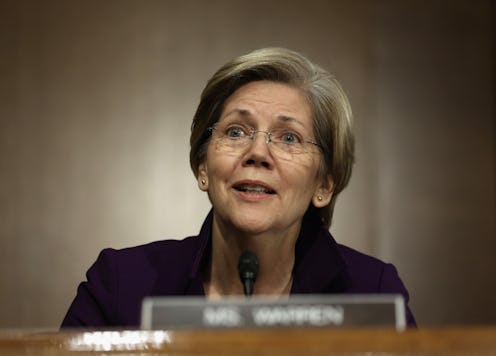News
Her Solution To Student Debt Was Doomed On Arrival
Student loans loom behind us like a bad dream. Somehow, no amount of budgeting and penny pinching can save us from the crushing truth. In the past year alone, the nationwide total of student debt came to $1.08 trillion. So, this summer, Democratic Sen. Elizabeth Warren proposed the Bank on Students Emergency Loan Refinancing Act, a bill intended to relieve the crushing debt from student loans. But it failed to pass in the Senate, and, more importantly, utterly failed to solve the root of the problem: ballooning college tuition.
For Warren, however, the fight isn’t over. She's made it her mission to put the bill back in discussion for a re-vote in September, even getting the support of President Obama himself. “As a country, we can either invest in tax loopholes for billionaires or lower-cost student loans for young people who are trying to build a future,” Warren told Rolling Stone in an interview published in August.
Warren's bill planned to alleviate the student loan crisis by allowing borrowers with older student loans to refinance at the 3.86% interest rate established in 2013. By lowering interest rates on all student loans — private and federal — the bill aimed to make payments more affordable.
The Flaw In Warren's Plan
One major problem: While we need to prevent student debt from going into a deeper downward spiral, Warren’s bill didn’t tackle the rising college tuition that causes student debt. According to data from the federal government’s Institute of Educational Sciences, the cost of a degree at public and private two- and four-year institutions rose 70 percent between the 2000-2001 and 2010-2011 school year. Meanwhile, family incomes aren’t rising at the same rate, so more families are forced into student loans.
Additionally, the bill provided only temporary relief to an enduring problem and failed to take measures for current and future students.
“It’s just a Band-Aid,” said Richard Vedder, director of the Center for College Affordability and Productivity and economist at Ohio University. “It’s not changing the system, and only deals with past borrowers.”
The Students Who Wouldn't Have Benefited
True, the bill could have aided millions of students with paying back their loans. It would have also consolidated private student loans under the federal program and financed them at the same lower interest rate for similar federal loans. But only private student loans in good standing would have been eligible. Students in default — those who fail to make payments on time — would gain nothing from the bill, and they're the ones who need relief the most.
But what truly doomed the bill from the start was how it would be financed. Warren proposed gaining revenue using the Buffett Rule, which would tax millionaires a minimum of 30% of their income. This killed most Republican support the first time around, and gives it no chance of passing if revisited.
One Problem That Needs To Be Addressed
The bill had its strengths, but unless it is revised to address the real problem — the loans themselves — and financed through different means, then revisiting it would be time wasted. Warren’s bold plan to target billionaires is noble, but it’s just not plausible to get the Republican support she needs. Plus, there are quite a few programs out there already that make loans more affordable, such as federal student loan forgiveness or repayment plans, yet none of them tackle the high cost of college and the domino effect it has on student debt.
A generation of students is crippled by mounting debt. Students are taking on more jobs and penny pinching to extremes just to keep their heads above water. We need a real solution that can help everyone — past, present, and future graduates. Realistically, the bill needs major changes to be more than just what many Republicans call a midterm election year gimmick.
Without a way out, we're jeopardizing both our students’ financial prospects and possibly the economy’s success as a whole. Instead of revisiting the past, we should seriously reexamine the way our higher education is being financed, and focus on regulating soaring college tuition and fees.
